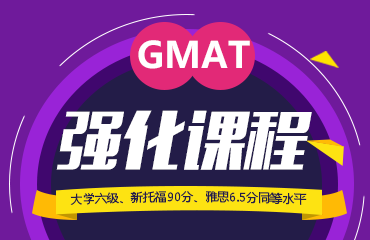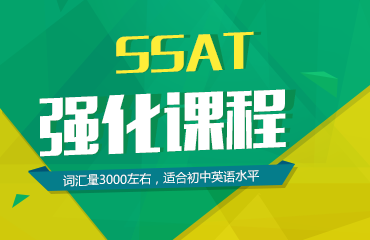11月7日的雅思阅读考题回顾已经放出来了,那么在以下文章中,北京朗阁小编就为大家带来2019年11月7日雅思阅读考题回顾,请看以下内容:
11月7日的雅思阅读考题回顾已经放出来了,那么在以下文章中,北京朗阁小编就为大家带来2019年11月7日雅思阅读考题回顾,请看以下内容:
|
考试日期 |
2019年11月7日 |
|
Reading Passage 1 |
|
|
Title |
Classifying societies |
|
Question types |
TRUE/ FALSE/ NOT GIVEN 7题 Short-answer questions 6题 |
|
文章内容回顾 |
A Although humans have established many types of societies throughout history, sociologists and anthropologists tend to classify different societies according to the degree to which different groups within a society have unequal access to advantages such as resources, prestige or power, and usually refer to four basic types of societies. From least to most socially complex they are clans, tribes, chiefdoms and states. B Clan These are small-scale societies of hunters and gatherers, generally of fewer than 100 people, who move seasonally to exploit wild (undomesticated) food resources. Most surviving-hunter-gatherer groups are of this kind, such as the Hadza of Tanzania or the San of southern Africa. Clan members are generally kinsfolk, related by descent or marriage. Clans lack formal leaders, so there are no marked economic differences or disparities in status among their members. C Because clans are posed of mobile groups of hunter-gatherers, their sites consist mainly of seasonally occupied camps, and other smaller and more specialized sites. Among the latter are kill or butchery sites—locations where large mammals are killed and sometimes butchered—and work sites, where tools are made or other specific activities carried out. The base camp of such a group may give evidence of rather insubstantial dwellings or temporary shelters, along with the debris of residential occupation. D Tribe These are generally larger than mobile hunter-gatherer groups, but rarely number more than a few thousand, and their diet or subsistence is based largely on cultivated plants and domesticated animals. Typically, they are settled farmers, but they may be nomadic with a very different, mobile economy based on the intensive exploitation of livestock. These are generally multi-munity societies, with the individual munities integrated into the larger society through kinship ties. Although some tribes have officials and even a “capital” or seat of vernment, such officials lack the economic base necessary for effective use of power. E The typical settlement pattern for tribes is one of settled agricultural homesteads or villages. Characteristically, no one settlement dominates any of the others in the region. Instead, the archaeologist finds evidence for isolated, permanently occupied houses or for permanent villages. Such villages may be made up of a collection of free-standing houses, like those of the first farms of the Danube valley in Europe. Or they may be clusters of buildings grouped together, for example, the pueblos of the American Southwest, and the early farming village or small town of Çatalhöyük in modern Turkey. F Chiefdom These operate on the principle of ranking—differences in social status between people. Different lineages (a lineage is a group claiming descent from a common ancestor) are graded on a scale of prestige, and the senior lineage, and hence the society as a whole, is verned by a chief. Prestige and rank are determined by how closely related one is to the chief, and there is no true stratification into classes. The role of the chief is crucial. G Often, there is local specialization in craft products, and surpluses of these and of foodstuffs are periodically paid as obligation to the chief. He uses these to maintain his retainers, and may use them for redistribution to his subjects. The chiefdom generally has a center of power, often with temples, residences of the chief and his retainers, and craft specialists. Chiefdoms vary greatly in size, but the range is generally between about 5000 and 20,000 persons. H Early State These preserve many of the features of chiefdoms, but the ruler (perhaps a king or sometimes a queen) has explicit authority to establish laws and also to enforce them by the use of a standing army. Society no longer depends totally upon kin relationships: it is now stratified into different classes. Agricultural workers and the poorer urban dwellers form the lowest classes, with the craft specialists above, and the priests and kinsfolk of the ruler higher still. The functions of the ruler are often separated from those of the priest: palace is distinguished from temple. The society is viewed as a territory owned by the ruling lineage and populated by tenants who have an obligation to pay taxes. The central capital houses a bureaucratic administration of officials; one of their principal purposes is to collect revenue (often in the form of taxes and tolls) and distribute it to vernment, army and craft specialists. Many early states developed complex redistribution systems to support these essential services. I This rather simple social typology, set out by Elman Service and elaborated by William Sanders and Joseph Marino, can be criticized, and it should not be used unthinkingly. Nevertheless, if we are seeking to talk about early societies, we must use words and hence concepts to do so. Service’s cateries provide a od framework to help organize our thoughts.
1-7 TRUE/ FALSE/ NOT GIVEN 1. Little economic difference could be found between clan members.---T 2. There are a wide range of plants that grew by the farmers of a tribe.---NG 3. One settlement is the most important in a tribe.---F 4. How much land a person owns determines his status.---F 5. People craft ods in chiefdoms.---T 6. The king uses military force to maintain the order of a state.---T 7. Bureaucratic officers receive higher salaries than other members do.---NG
8-13 Short-answer questions 8. What are carried out at the clan work sites? ---Tools 9. In addition to settling farming, what is the other way of life for tribes? --- Nomadic 10. What is the arrangement of Çatalhöyük’s housing units? --- Grouped 11. What does a chief reward his subjects apart from giving crafted ods? --- Foodstuffs 12. What is the smallest possible population of a chiefdom? --- 5000 13. Craft specialist |
|
题型难度分析 |
篇的题型包括回答问题和判断题,属于基础题型,难度不大 |
|
题型技巧分析 |
对于判断题要注意准确*的找出定位词,并根据定位词确定文章出题段落,并*阅读所找出题句与文章所给题目的相关性,一般出题句为一句话,之后进行判断。要注意此题在文章中出题的顺序性。 |
|
剑桥雅思推荐原文练习 |
剑10 Test 4 Passage 1 |
|
Reading Passage 2 |
|
|
Title |
机器人 |
|
Question types |
Matching Information 6题 Summary Completion 7题 |
|
文章内容回顾 |
A During July 2003, the Museum of Science in Cambridge, Massachusetts exhibited what Honda calls 'the world's most advanced humanoid robot', AS1MO (the Advanced Step in Innovative Mobility). Honda's brainchild is on tour in North America and delighting audiences wherever it es. After 17 years in the making, ASIMO stands at four feet tall, weighs around 115 pounds and looks like a child in an astronaut's suit. Though it is difficult to see ASIMO's face at a distance, on closer inspection it has a smile and two large eyes' that conceal cameras. The robot cannot work autonomously - its actions are 'remote controlled' by scientists through the computer in its backpack. Yet watching ASMIO perform at a show in Massachusetts it seemed uncannily human. The audience cheered as ASIMO walked forwards and backwards, side to side and up and downstairs. After the show, a number of people told me that they would like robots to play more of a role in daily life - one even said that the robot would be like 'another person'. B While the Japanese have made huge strides in solving some of the engineering problems of human kinetics (n.动力学) and bipedal (adj. 两足动物的)movements, for the past 10 years scientists at MIT's former Artificial Intelligence (Al) lab (recently renamed the Computer Science and Artificial Intelligence Laboratory, CSAIL) have been making robots that can behave like humans and interact with humans. One of MITs robots, Kismet, is an anthropomorphic (adj.拟人的) head and has two eyes (complete with eyelids), ears, a mouth, and eyebrows. It has several facial expressions, including happy, sad, frightened and disgusted. Human interlocutors are able to read some of the robot's facial expressions, and often change their behavior towards the machine as a result - for example, playing with it when it appears ‘sad’. Kismet is now in MIT’s museum, but the ideas developed here continue to be explored in new robots. C Cog (short for Cognition) is another pioneering project from MIT’s former AI lab. Cog has a head, eyes, two arms, hands and a torso (n.躯干) - and its proportions were originally measured from the body of a researcher in the lab. The work on Cog has been used to test theories of embodiment and developmental robotics, particularly getting a robot to develop intelligence by responding to its environment via sensors, and to learn through these types of interactions. D MIT is getting furthest down the road to creating human-like and interactive robots. Some scientists argue that ASIMO is a great engineering feat but not an intelligent machine - because it is unable to interact autonomously with unpredictability in its environment in meaningful ways, and learn from experience. Robots like Cog and Kismet and new robots at MIT’s CSAIL and media lab, however, are beginning to do this. E These are exciting developments. Creating a machine that can walk, make gestures and learn from its environment is an amazing achievement. And watch this space: these achievements are likely rapidly to be improved upon. Humanoid robots could have a plethora of uses in society, helping to free people from everyday tasks. In japan, for example, there is an aim to create robots that can do the tasks similar to an average human, and also act in more sophisticated situations as firefighters, astronauts or medical assistants to the elderly in the workplace and in homes – partly in order to counterbalance the effects of an ageing population. F Such robots say much about the way in which we view humanity, and they bring out the best and worst of us. On one hand, these developments express human creativity - our ability to invent, experiment, and to extend our control over the world. On the other hand, the aim to create a robot like a human being is spurred on by dehumanized ideas - by the sense that human companionship can be substituted by machines; that humans lose their humanity when they interact with technology; or that we are little more than surface and ritual behaviors, that can be simulated with metal and electrical circuits.
1-6 Matching Information 1. different ways of using robots --- E 2. a robot whose body has the same proportion as that of an adult --- C 3. the fact that human can be copied and replaced by robots --- F 4. a comparison between ASIMO from Honda and other robots --- D 5. the pros and cons of creating robots --- F 6. a robot that has eyebrows --- B
7-13 Summary Completion In 2003, Massachusetts displayed a robot named ASIMO which was invented by Honda, after a period of 7.17 years in the making. The operating information is stored in the computer in its 8.backpack so that scientists can control ASIMO's movement. While Japan is making great progress, MIT is developing robots that are human-like and can 9.interact with humans. What is special about Kismet is that it has different 10.facial expressions which can be read by human interlocutors. 11.cognition is another robot from MIT, whose body's proportion is the same as an adult. By responding to the surroundings through 12.sensors, it could develop its 13.intelligence. |
|
Reading Passage 3 |
|
|
Title |
How scientists think of science |




